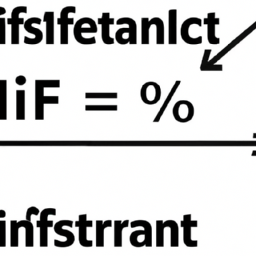Financial literacy is a crucial life-long skill that everyone participating in modern society can benefit from. One of the essential concepts in finance is interest, which is a fee charged by a lender to a borrower for the use of money. There are two types of interest: simple and compound interest. In this article, we will focus on simple interest and how to calculate it.
Simple interest is a fixed charge based on a loan principal, and it's typically assigned as a percentage. It's a way of calculating how much interest will accrue over a set period, such as a year. Unlike compound interest, which is based on the principal and accumulated interest, simple interest is only based on the principal amount of a loan.
The formula for simple interest is straightforward:
Simple Interest = (Principal x Rate x Time)/100
Where:
- Principal is the amount of money borrowed or invested
- Rate is the annual interest rate as a percentage
- Time is the length of time, usually expressed in years
For example, if you borrow $10,000 at an annual interest rate of 5% for five years, your total interest payment would be:
Simple Interest = ($10,000 x 5% x 5) / 100 = $2,500
This means you will pay a total of $12,500 over the five-year term.
A simple interest calculator can help you find the amount of interest your savings account, bond, or CD could earn over time. All you need to do is enter the principal, interest rate, and time period, and the calculator will do the rest.
It's essential to note that simple interest is a fixed charge, which means it does not compound over time. Therefore, your interest payment will remain the same throughout the loan term.
The difference between simple interest and compound interest is the way the interest accumulates. Simple interest accumulates only on the principal amount, while compound interest is when the interest you earn on a balance in a savings or investing account is reinvested, earning you more interest.
Compound interest is the secret to earning more interest on top of what you've already earned in your savings balance. For example, if you invest $10,000 in a savings account with a 5% annual interest rate, your balance would grow to $10,500 at the end of the first year. However, if you leave that $10,500 in the account for another year, you'll earn interest on the $10,500 balance, not just the original $10,000. This means your balance would grow to $11,025 at the end of the second year.
Compound interest can be both good and bad, depending on the situation. If you're borrowing money, compound interest means you'll end up paying more in interest over time. However, if you're investing money, compound interest means you'll earn more interest over time.
In conclusion, simple interest is a type of interest that's based on the loan principal amount and a fixed rate. It's a straightforward way of calculating how much interest will accrue over time. Understanding the basics of simple interest is crucial for anyone who wants to be financially literate. By knowing how to calculate simple interest, you can make informed decisions about borrowing, investing, and saving money.
